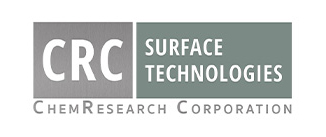
27 Dec Common Nickel Electroplating Applications
Nickel plating has many practical and decorative applications. The versatility and impressive characteristics of a nickel coating allow a wide range of industries to enhance the appearance and extend the lifespan of their metal parts. Continue reading to learn more about what nickel electroplating is commonly used for and how the process works.
What Is Nickel Electroplating?
The process of depositing a layer of nickel onto a metal surface is called nickel electroplating. The nickel and the metal substrate are both placed into an electrolyte solution and then an electrical current is applied. The electrical current causes the nickel to be deposited onto the substrate, making it much more durable. In fact, the nickel electroplating process can improve many characteristics.
The Benefits of Nickel Plating
There are many beneficial properties that make nickel plating an ideal coating choice for metal parts in a wide range of industries. For instance, nickel is resistant to high heat, and reduces the risk of metal parts overheating. And its high resistance to corrosion and wear is another great advantage. Nickel electroplating improves the lifespan of exposed metal parts and prevents erosion.
Because nickel adheres well with other materials, it can be used as a base plating layer to improve the corrosion resistance of other coatings, such as chrome plating or silver plating. Nickel electroplating also improves the tensile strength, machinability, solderability, and ductility of the metal substrate underneath.
Nickel plating can easily be applied to many types of metals and alloys, including copper, aluminum, titanium, and stainless steel. The process of nickel electroplating creates a uniform coating, even on more complex parts, resulting in an extremely smooth surface.
Nickel Plating Applications
Decorative Applications
Because its chromium additives give a brighter decorative finish, nickel plating is often used to improve the appearance of metal parts. Although it isn’t as durable or as thick as the sulfamate nickel used in engineering applications, sulfate nickel is typically used for decorative applications because of its brightness. However, decorative nickel plating still offers increased resistance to corrosion and wear.
The automotive industry frequently uses decorative nickel plating for wheels, grills, bumpers, and other exterior parts that are frequently exposed to the elements. Decorative nickel plating is also commonly used in parts for hand tools, hardware, plumbing fixtures, bicycles, motorcycles, and more.
Engineering Applications
Even when appearance is not a concern, nickel plating can be used to improve resistance to corrosion and wear. Engineering applications primarily use sulfamate nickel plating, which offers a duller finish than sulfate, but is much stronger and has less material stress in the coating.
Engineering nickel still looks pleasant, however, and can restore old parts to their original specifications. It also provides superior corrosion and wear resistance for metal parts in various industries.
For instance, engineering nickel plating is often used in the electronics industry on circuit boards, computer components, telecommunications equipment, and other devices. It’s also used for many food processing, chemical, automotive, and aerospace industry applications.
Nickel Electroplating in Phoenix, Arizona
If you need expert nickel electroplating services, make sure to contact a professional so you can reap all the benefits that this coating offers. CRC Surface Technologies is highly experienced in applying sulfamate nickel plating to metal parts for a broad range of industries and applications.
We also offer an extensive list of other surface treatments, as well as pickup and delivery, testing, light assembly, and other services. Request a quote today by emailing rfq@chemresearchco.com, or give us a call at 602-253-4175 to learn more.
Images used under creative commons license – commercial use (12/27/2022). Photo by Bao Menglong on Unsplash

